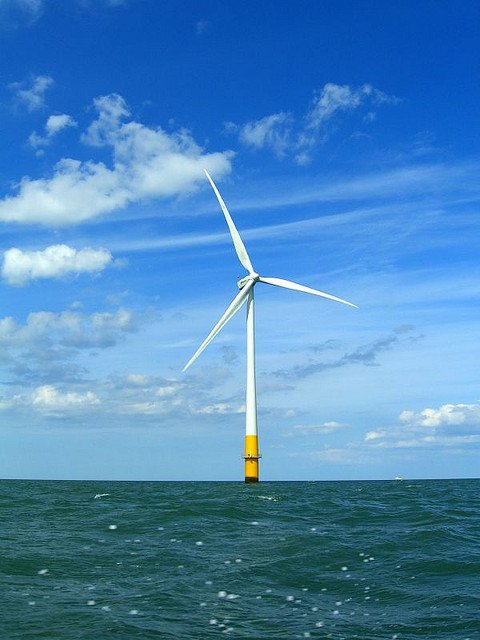There’s plenty of energy off our coasts. Too bad the Trump Administration is looking the wrong way.
Yesterday was a momentous one for offshore energy, but maybe not in the way that some folks think. Sure, the administration opened up for public comment its plan to offer new offshore oil/gas leases (even if industry might say, “Meh”). But much more important for our future economy—and our planet—was what happened to move US offshore wind forward, the latest in a line of notable recent happenings at home and abroad.

Credit: phault
Massachusetts offshore wind happenings
Massachusetts took an important step forward in having the state’s utilities ask wind developers to bid to supply some 400 megawatts of offshore wind capacity, enough to power almost 200,000 Bay State homes. The move, required under the state’s 2016 energy diversity law, is aimed at bringing in the first tranche of what will eventually be at least 1600 megawatts of offshore wind for those utilities’ customers.
It’s easy to be excited about another step toward adding such a powerful technology to our nation’s clean energy toolbox. For Massachusetts, getting the state out there looking for solid offshore wind projects and prices in a competitive way is a vital next step.
Economic development means grabbing hold of good, new areas for business and jobs. We’re already seeing US industry step up to the plate—including by readying the type of specialized ships that we’ll need to get those wind turbines where they need to be.
Tackling climate change and protecting our environment means investing in expanding low-carbon energy options in responsible ways. It’s telling that yesterday’s move has garnered very positive reactions from environmental groups like the National Wildlife Federation and the Conservation Law Foundation (who also produced this great infographic laying out the strong case for offshore wind in New England).
Leadership means not waiting for others to go first.
Yesterday’s step keeps Massachusetts firmly in contention when it comes to building a new industry on our shores, making a new carbon-free electricity source a reality, and leading on US offshore wind.
Offshore wind around the US, and globally
The Massachusetts move is just the latest in all kinds of noteworthy steps for this exciting technology. Here’s a sampling:
- Maryland approves support for two projects: Last month two offshore wind projects earned approval from Maryland’s regulators. The projects total 368 megawatts, which’ll generate enough electricity for well over 100,000 homes. It could start to come online around 2020.
- The first US offshore wind farm is making it real for our country: When the Block Island Wind Farm in Rhode Island went online late last year, it made history as the first offshore wind farm anywhere in the Americas. It also proved that seeing is believing, as boat tours take people to see the turbines up close and personal. Those include the important tradespeople who we’re going to need to make the next offshore wind farms happen—steelworkers, pipefitters, electricians, and more—and the politicians who are helping to create a welcoming environment.
- Two big projects go online off Germany: Just this week, DONG Energy—the largest owner of offshore wind in the world, and one of the companies vying to supply Massachusetts—brought two more projects online 30 miles off Germany’s shores. The two projects’ 97 turbines add 582 megawatts to the global total of more than 15,000. And they help add to the excitement fueled by recent record-low prices for future European offshore wind projects.
- Bigger turbines are under development: While land-based wind turbines are typically 2-3 megawatts each, open water off our shores provides opportunities for using bigger, more powerful turbines to bring the costs down. Recent offshore projects, including Block Island and the new German projects, use turbines of around 6 megawatts. But the latest turbine, unveiled earlier this month, is more than 50% more powerful. Still larger ones are on the way.
Investing in the future, not the past
So, where’s our offshore energy scene headed? There’s a good bet that offshore wind is going to grow to be an important piece of our energy mix. Even the Trump Administration seems to recognize the importance of this powerful new (new to the US) technology.
If we’re smart, we’ll make sure that happens, and quickly. Our country’s energy future does include offshore. But it’s wind, not oil.

